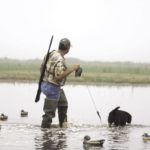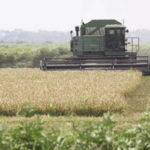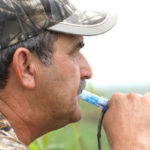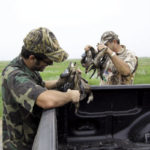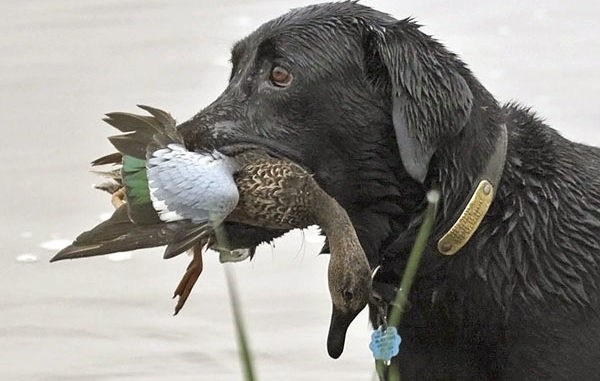
September kicks off the duck season in Southwest Louisiana.
In late August, before the last notes of the accordion have faded, the lyrics of a French two-stepping song have been sung and the Gueydan Duck Festival Queen has been crowned, bluewing teal have already made up their minds to head south. And for a large number of these international travelers, that destination is Southwest Louisiana — rice-field country.
From Kaplan to Mulvey, Wright to Gueydan, Lake Arthur to Jennings, the bluewings’ arrival is very much part of the fabric that makes up the culture and traditions of the people who call these places home. In September, this bird is the first to challenge the waterfowl hunter’s gun.
“It’s been my experience that there’s not a lot of places that have as deep and rich a tradition of teal hunting as the likes of what Southwest Louisiana has,” Delta Waterfowl Senior Vice President John Devney said. “I’ve always been a little shocked that guys I know in Missouri, Arkansas and other places really don’t have an affinity for that season, or get really cranked up about it, as much as the guys in Southwest Louisiana.
“And I’m just a little jealous that I don’t get to participate. If you’re a guy like me, who loves ducks and hunts ducks, I’ll drive around here in the spring, particularly this year, and they have a zillion blue-winged teal up here; we all know that the vast majority of them will be gone before our duck season starts in late September.”
Most of Louisiana’s duck hunters who look forward to the special teal season and paid attention to the U.S. Fish and Wildlife Service’s spring pond and breeding number survey will remember bluewing teal were down 14 percent from the 2009 estimates. However, the 6.3 million bluewings counted in 2010 remain 36 percent above the long-term average.
What impact does such a decline have on Southwest Louisiana’s rice fields and marshes? Chances are, not much.
According to Devney and information released by USFWS, there was a record amount of water on the Dakota prairie. Moreover, that water was present through much of the summer well into July.
Not only was there lots of water in the Dakotas, but also much of the Midwest outside of the traditional survey areas.
“There were really wet conditions south of the Dakotas — places like Nebraska, Kansas, Iowa and some of those areas,” Devney said. “We’ve seen it happen before where we’ve had lower bluewing counts in the traditional survey areas than we would have anticipated. But they had extremely good water conditions to the south.
“It seems like bluewing teal are one of those ducks that will sort of drop out of the survey area if there are really good conditions to the south. They are very pioneering. They chase the water, and not only do they chase it, as soon as they find it, they may not go anywhere.”
What waterfowl guides and outfitters in the southwest region of the state have known for years is those blue-winged pioneers hone in on fields where second-harvest rice has been cut and seed survival is high.
David Smith, owner and operator of David Smith’s Hunting, emphasized this point.
“The September season occurs immediately after the rice harvest,” he said. “Seed survival is incredibly high, and they’re cutting the rice at the end of August, so you’re looking at almost within 30 days of the hunting season being opened — and, in some cases, within days of rice being cut it opens.
“Some of that seed is going to sprout; it’s going to germinate with all the water hitting it. The birds are going to pick some of it up. Your rodents and mice are going to pick some of it up, and some of it’s going to fall to insects.
“Within the first 30 days, you have high seed survival. Beyond that — 60 days — it starts dropping off. At 90 days, it’s dropping off. And into 120 days, you hardly have any seed at all.”
Besides plenty of waste rice-grain lying in these agricultural fields, there is also the water level bluewings prefer that most farmers can control.
“I’ve always said, ‘If you can’t control water fluctuation, you do not have control on waterfowl,’” Smith, who has over 30 years experience as an outfitter, explained. “In the marsh, you can’t control water depth. In the rice fields, you can. Teal have a short neck and short body. The water has got to be shallow for them to forage on the bottom. The rice fields are where they find the shallow water they like.”
Smith also mentioned that some farmers prefer to leave water on the field heading into September. When cutting their second rice crop, rather than drain the water, only to turn right around and flood it for the teal season, they’ll leave it instead.
“If you ever hit a pond where the farmer has intended to cut a second crop of rice and in order to save on water expense, he’ll take his combine and cut it in the water, it’s unbelievable,” Smith said. “It’s like dumping a sack of rice in the pond. You can’t keep 100 percent of your rice. Some of it is going through the shakers on the combine and falls on the ground, going out with the chaff. I’ve seen teal literally fall into these fields.”
During 2009’s opening weekend, reports were nothing short of spectacular coming from the southwest rice-field country. Guys were taking pictures of limits with their cell phones and sending them to the LouisianaSportsman.com reports page. Seeing sappy grins ear to ear, I couldn’t help being a little bit bummed, missing the opener due to other obligations.
Not to be denied, my son and I managed to make a hunt with Smith in one of his rice field locations below Jennings on the last weekend of the season.
The moments before sunrise are when teal are most active. Like spectators at an air show, every hunter tries to be in place for the best seat in the house well before daylight. In those enchanting moments, where twilight hasn’t quite greeted legal shooting light, you hear the rush of wings slicing the night’s sky. The muscles in your neck that moments ago were not quite awake twinge suddenly with a feeling you know will hurt the next day.
Your eyes strain in the darkness to catch a glimpse of the targets, but it’s too late. Pieces of sliced sky drift off into silence, and you realize the birds have passed. If these teal were F-18s, what’s normal flight for them would be the envy of every Blue Angel pilot.
If you’re lucky enough to see them from long distances, you’ll see the gentle roll of their group flight sweeping above the roseau-lined ditches of the rice fields.
The powder-blue patches on top of the diminutive wings glisten in the morning sun, causing you to lift your cheek ever so slightly from the gunstock momentarily. Just as they arrive to the outer edges of the decoys, they thrust vertically skyward in a starburst at the volleys from your shotguns.
With nary a duck on the water in the front of the rice field blind, excuses abound. The truth is that most gunners who go to the rice fields during September’s teal season have never taken their firearms out of their gun cabinets during the summer. Poor marksmanship is more a result of muscle atrophy, hand/eye coordination and just plain rusty reflexes than anything.
By the end of the 16-day season, hunters get better. Taking a four-teal limit using less than a box of shells is a vast improvement over opening-day misses.
In spite of lots of pressure and scattered birds due to an overabundance of rain that had them spread out in nearly every rice field in the area, my son and I still managed to get our limits before 8 a.m. What’s more, getting a limit before 8 a.m. shouldn’t present a problem going into 2010’s season.
Weighing 1 pound on the average, teal are preferred by many duck hunters over other ducks. Plucked and roasted in a black-iron pot, smothered down until tender, that meat close to the bone simply tastes better. Tossing in a side dish of Mahatma or Konriko Louisiana rice and then covering it with gravy made from the teal-drippings suddenly makes Saturday lunch at the duck camp one to remember. And, that’s living large for Southwest Louisiana’s early teal season hunters.

